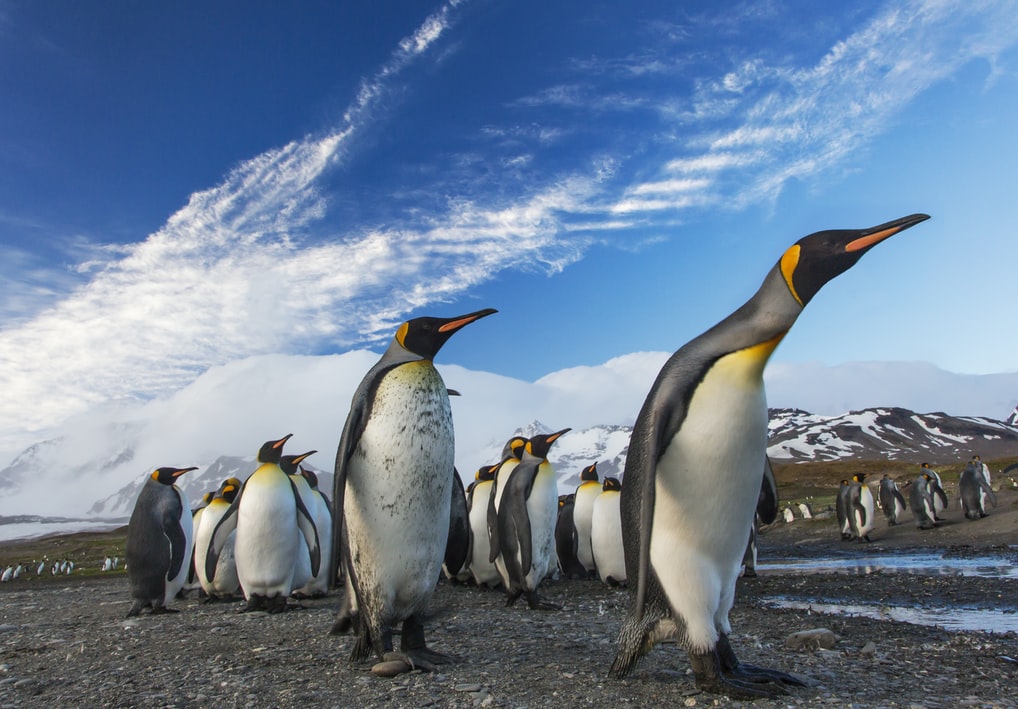News
Scientists use satellites to discover hidden colonies of penguins across Antarctica
The discovery of these new colonies of reveals both good and bad news for emperor penguins.

Satellites have discovered 11 emperor penguin colonies in Antarcticia that had previously been unknown, boosting the number of colonies to over half a million.
Researchers from the British Antarctic Survey (BAS) used new higher-resolution images from the European Space Agency’s Copernicus Sentinel-2 satellite mission to survey the penguin population in the region.
Thanks to the tell-tale patches of red-brown penguin guano strewn across the antarctic landscape, the scientists were able to locate smaller colonies that had previously been unknown.
The new colonies are believed to be consist of a few hundred penguins each – a smaller number than is found among typical colonies – but the discovery boosts the number of known colonies by 20 percent.
#SPACE : #Copernicus helps discover new colonies of emperor #penguins in Antarctica https://t.co/CgOjzXwmkg
— Agence Europe (@AgencEurope_EN) August 6, 2020
It is now believed that the number of emperor penguins in Antarctica is between 265,500 and 278,500 breeding pairs.
“The [new colonies] are an exciting discovery,” said BAS senior scientist Peter Fretwell, who led the research, in a statement. “Whilst this is good news, the colonies are small and so only take the overall population count up to just over half a million penguins.”
The new data should help European researchers better help to monitor how environmental changes will impact the emperor penguin population.
Conservationists and researchers have warned that the birds face a dire threat in the coming decades as the Antarctic sea ice upon which they depend continues to melt at a rapid rate.
Emperor penguins are among the largest penguin species, weighing in at up to 90 pounds and living for up to 20 years. They require a stable sea ice habitat from April to December in order to successfully breed and survive before moving to the open sea.
The creatures rely on the sea ice to incubate their eggs and raise their chicks, and if sea ice is unstable following their breeding period then they can drown during their annual moult when their feathers are no longer waterproof.
?? Ever tried to observe #penguins from space?#Copernicus ?️??satellite imagery has revealed that there are nearly 20% more emperor penguin colonies in #Antarctica than previously thought.
Learn how & read more about @BAS_News' study here ➡️https://t.co/EO51hjDY6V pic.twitter.com/2FWFZWwTDk
— Copernicus EU (@CopernicusEU) August 5, 2020
And as climate conditions continue to rapidly grow warmer, scientists worry about the impact on the emperor penguins’ habitat.
Researchers see the newly-discovered colonies as “canaries in the coal mine” when it comes to understanding global warming’s impact.
“Whilst it’s good news that we’ve found these new colonies, the breeding sites are all in locations where recent model projections suggest emperors will decline,” said BAS head of conservation biology Dr. Phil Trathan.
“Birds in these sites are therefore probably the ‘canaries in the coal mine,’” Trathan added. “We need to watch these sites carefully as climate change will affect this region.”
Many of the colonies were discovered far offshore, including one which was located as far as 112 miles (180 km) from Antarctica on sea ice formed around icebergs which were grounded in shallow water.
“Many of the penguin scientists we have talked to were disbelieving, as normally you expect them to be at the coast,” Frewtwell said.
Because the discovery of the colonies offer surprising insights on the behavior of the species – as well as both good and bad news – scientists remain hopeful that they can put the new information to use in protecting the vulnerable species.
Typos, corrections and/or news tips? Email us at Contact@TheMindUnleashed.com
